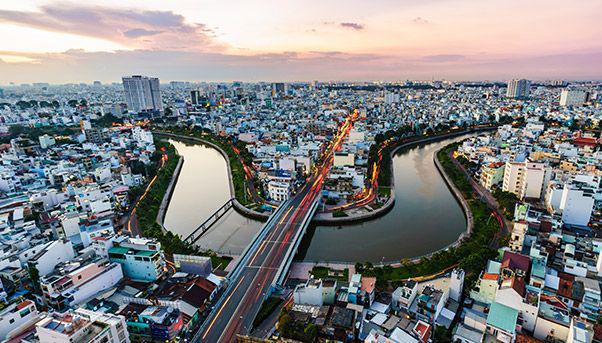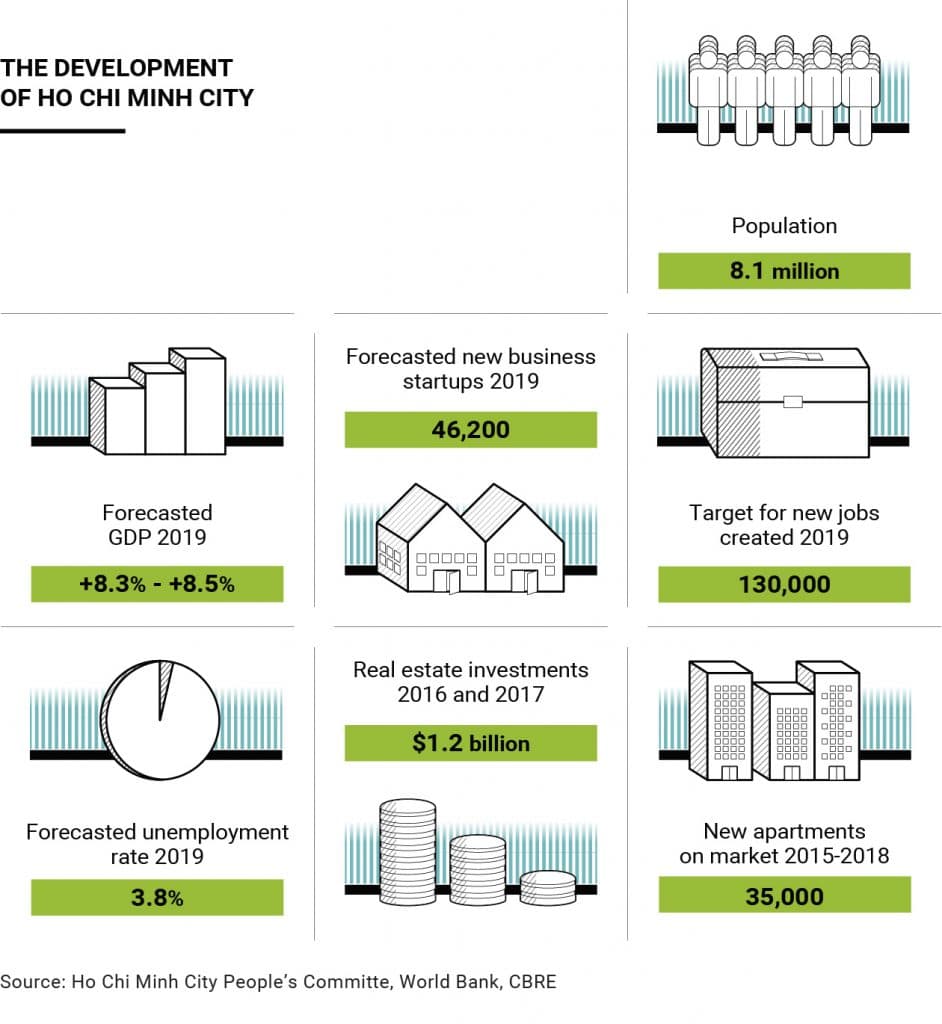
The new face that Ho Chi Minh city shows off to tourists and real estate developers is the postcard-perfect Central Park and its Landmark 81, the highest skyscraper in Vietnam and the 14th-tallest in the world. Around the skyscraper stands 17 residential towers that seen from the sky resemble a patrol of knights deployed in defense of the king.
The city’s most important real estate development was completed in 2017 with the inauguration of the skyscraper that more than anything else symbolizes the economic transformation achieved by this city, known as Saigon until 1976. Today it is the thriving economic capital of Vietnam, a megacity with 8.1 million inhabitants destined to reach 10 million in 2026, according to United Nations estimates.
Urban growth is incessant, its real estate market is booming, and the city’s skyline now bristles with modern buildings. Even if official figures do not exist, the most reliable estimates – as reported in a recent “Guardian” article — indicate that over a third of historic city buildings have been destroyed in the last 20 years to make room for new construction.
The project of the future
Landmark 81, a city landmark, will soon be overtaken by an even taller building designed by German architect Ole Scheeren. The project is called “Empire City” and involves the construction of three towers the tallest of which, Empire 88, will have 88 floors and will reach a height of 333 meters.
While the two lower buildings will mainly house office space, Empire 88 will have apartments, hotels and a mid-tower viewing platform called the Sky Forest modeled after the rice terraces that dot the north of the country. Visitors to the Sky Forest can admire the constantly changing skyline of Ho Chi Minh City.
The Empire City project is just one of many real estate developments that are changing the face of the city. According to a study carried out by leading consulting firm CBRE, between 2015 and 2018, 35,000 new apartments were put on the market, a far greater number than the 10,000 registered in the 2012-2014 period. Developers and corporate buyers snapped up about $1.2 billion worth of residential-zoned land and newly built residential property in 2016 and 2017, said CBRE.
The main reason for this growth is foreign investors: real estate companies, private citizens, and companies that started pouring money into Vietnam after it joined the WTO in 2007. And from 2014 to date — according to estimates reported in a “Financial Times” article — the number of foreign buyers has practically doubled, most of them coming from South Korea, Hong Kong and China.

Urban development driven by economic growth
The vertical development of Ho Chi Minh City is driven by the city’s economic growth, which has now become the production hub of Vietnam but also the headquarters of many innovative companies that have opened their doors in recent months.
Vice President of the People’s Committee Le Thanh Liem on January 4 unveiled a series of ambitious goals for the city in 2019. Among these, a growth of the city’s GDP between 8.3% and 8.5%, the opening of 46,200 companies and the creation of 130,000 jobs, which should bring the unemployment rate in Ho Chi Minh City to 3.8%.
Regarding urban development, the representative of the city government announced the construction of 8 million square meters of new housing. The goal is to promote non-chaotic development that respects the environment. In fact – according to the Vice President – by 2019 the city’s goal is to treat 100% of solid waste from private homes and businesses, as as well as for 98% of hospital waste.
To achieve these objectives, the central government of Vietnam itself will come to the rescue, allocating $16.3 billion to Ho Chi Minh this year.
A growing city in a growing nation
Ho Chi Minh City is now the mirror of the new Vietnam. No other big city is capable to the same extent of interpreting the country’s attitude to change, which is achieved by constant investment in development rewarded by a rate of economic growth among the strongest in Asia.
According to the World Bank Vietnam had 6.8% GDP growth in 2018, which is forecast to contract slightly in 2019 (6.6%) and in 2020 (6.5%), while still maintaining its healthy pace. The country’s strong manufacturing industry is driving this growth, as well as international demand that is transformed into foreign direct investments and in an increasing number of foreign companies operating in Vietnam. All this also has an effect on population growth that — according to the World Bank — should make the population of Vietnam increase from 95 million today to 120 million expected for 2050. The increasing percentage of young people (today 70% of the population is under 35) is sure to make the desire for change even stronger.

